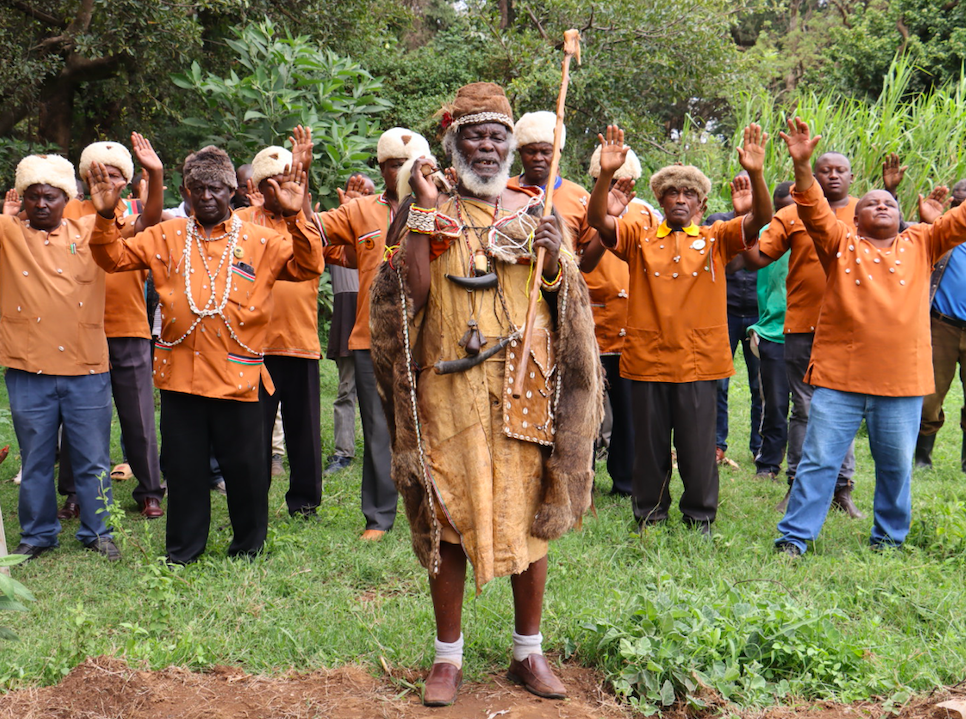Kikuyu elders have carried out a rare and symbolic ritual in Kiambu by planting a sacred Mugumo tree to replace one uprooted during the construction of the Karimenu II Dam reservoir. The act, which broke tradition, was meant to restore cultural balance while also supporting environmental conservation.
The original tree, which had stood for over 50 years at the center of the river where the dam’s intake tower now sits, was removed by contractors to pave way for the multi-billion water project.
“That Mugumo tree was standing where the dam intake tower is today. It was never swept away, even though Mugumo trees don’t have tap roots,” recalled Njoroge Mutugu, a member of the Kikuyu Council of Elders.
After its removal, the elders buried the tree in a ceremony to prevent taboo use of its parts for firewood or other purposes. According to tradition, the Mugumo plays a spiritual role, shielding the community from misfortune and fostering peace.
Although ritual slaughter had been planned, elders clarified it could not be performed publicly since each piece of meat carries symbolic meaning. “We normally don’t cut a Mugumo tree. When it falls, it is considered symbolic and requires answers from the gods,” Mutugu explained.
The elders said the newly planted tree now carries both a physical and spiritual duty, as they pray for its survival.
Athi Water Works CEO Engineer Joseph Kamau joined the elders in the planting, saying his participation reflected efforts to make water projects more inclusive of local communities and traditions.
The replanting is part of a larger watershed restoration programme in the Upper Tana and Mid-Galana basins. The initiative seeks to secure Nairobi’s water supply, rehabilitate degraded land, improve groundwater recharge, and plant thousands of indigenous trees along riparian zones. It also promotes agroforestry, food security through fruit orchards, and alternative livelihoods for local communities.






